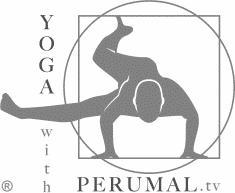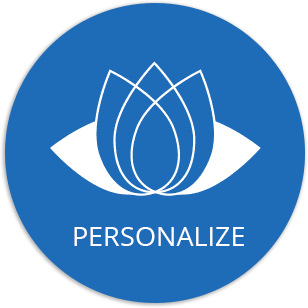REGULARITY
GOLDEN YOGA RULE
REGULARITY IN PRACTICE
REGULARITY IN PRACTICE
The third element from the 10 elements of the practice is heard frequently: always practice at the same time and place every day. Regularity within all aspects of our lives from sleep, diet and work is a pillar of stability leading to inner peace. Our biggest stresses are simply a lack of regularity.
The first step to reach regularity, is to hit the mat at the same time every day. But to avoid monotony or injuries, we must develop a creative method to practice regularly. You don’t have to do the same yoga movements every day. Practice 6 times a week and divide sessions into three separate sections. Focus the first section on the core postures for back and abs; the second on standing poses to develop the legs; and the third one on the upper body.

Slide title
Write your caption hereButton

Slide title
Write your caption hereButton
Practice one section per day. For example, Monday would be section #1 with postures such as boat and wheel; Tuesday, section #2 would include warrior sequences; and Wednesday, #3 for planks and side planks. Thursday through Saturday repeats Monday through Wednesday. Then Sunday would be a time to fast and/or meditate. For a more profound practice, you can combine different sessions during the second half of the week.
This method allows every section a minimum of 2 days’ rest within a week, allowing your body to recover, keeping an in-depth stimulation. This is just one of many examples of how to achieve a regular yoga practice in a safe manner that is results-oriented. To understand the process, one should practice the physical aspect along with the theory.
The benefits of regular yoga practices are numerous. The body is stimulated daily for detoxing, burning excess calories and relieving stress. Regular practices create a rhythm between practice and recovery for greater self-awareness. With consistency, the mind and the nervous system tune into the practice and stay there.
After months of consistent sessions, the body learns the exact hold time of postures to set more realistic goals. That way, on days that fall short of the goal, it’s easy to trace the reasons. Did you go to bed late the previous night? Did you change your diet? Have you experienced more work stress or illness? Stress builds up silently, until the physical symptoms such as low energy, headaches, upset stomach, diarrhoea, constipation, nausea, tense muscles, chest pains, rapid heartbeat and insomnia begin to plague us. In addition, mental symptoms of stress, from constant worrying, uncontrollable thoughts, forgetfulness, disorganization and lack of focus come upon us unexpectedly.

Slide title
Write your caption hereButton

Slide title
Write your caption hereButton
A ritual practice communicates the state of the body and mind on a daily basis. Daily yoga sessions teach us of how subtle changes in day-to-day living are affecting us. Then it becomes possible to see clearly which areas of our lives to adjust, from sleep to work. When there is a deviation from stress-free living ideals, the consistent practice not only warns us, but it also delays the onset of stress symptoms. Eventually, our regular practices become intuitive and we start to feel more and think less. The teacher within awakens.
It is important to keep in mind that the environment influences the practice. Standing yoga postures on a mat that is laid over a lawn is usually unstable compared to a studio hardwood floor. Arm balance postures on lawn may cause pain in the wrists or shoulders. Grass can also be itchy, especially while sweating, which complicates meditation. The beach is relaxing with the rhythmic sounds of the waves. But our limbs can sink in the sand in standing and arm balance postures, thus changing the foundation of the asana.

Slide title
Write your caption hereButton

Slide title
Write your caption hereButton
Get creative with your practice at home, you are not limited to the floor. Think outside the box! The bed will not allow many postures or salutations, but a lot of stretches are very possible, as well as several upper body joint preparation routines. If going to spacious yoga studios is not possible, be imaginative with the environment. Wake up before traffic and noise pollution for some yoga in the bed.
Practice regularly in a determined location and with time your eyes will familiarize with it. This allow the senses to focus inwards for deep and meditative yoga sessions.
Practice regularly in a determined location and with time your eyes will familiarize with it. This allow the senses to focus inwards for deep and meditative yoga sessions.
YOGA RETREATS
ITALY
MOROCCO
Follow us
© 2023 Perumal Koshy | All Rights Reserved
© 2024 Perumal Koshy | All Rights Reserved













